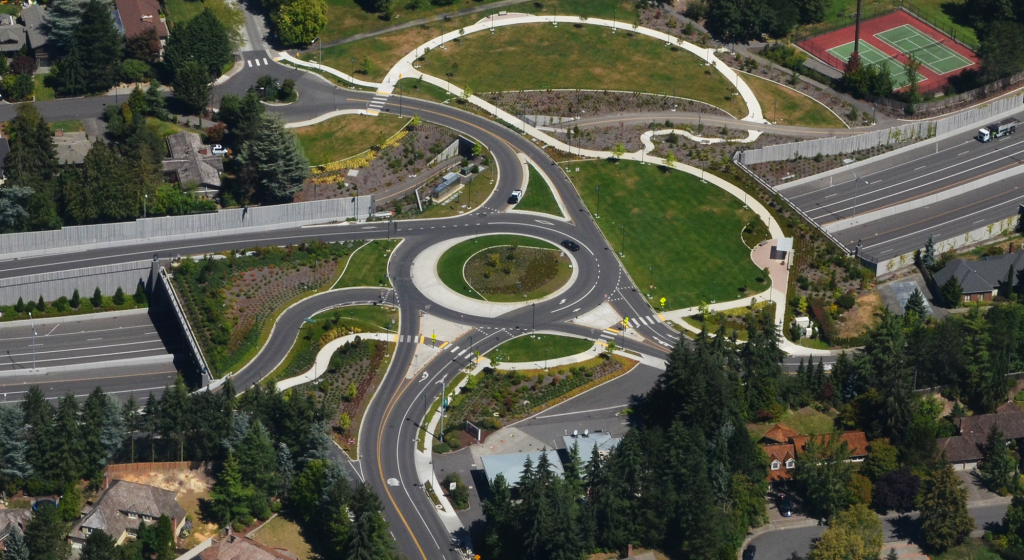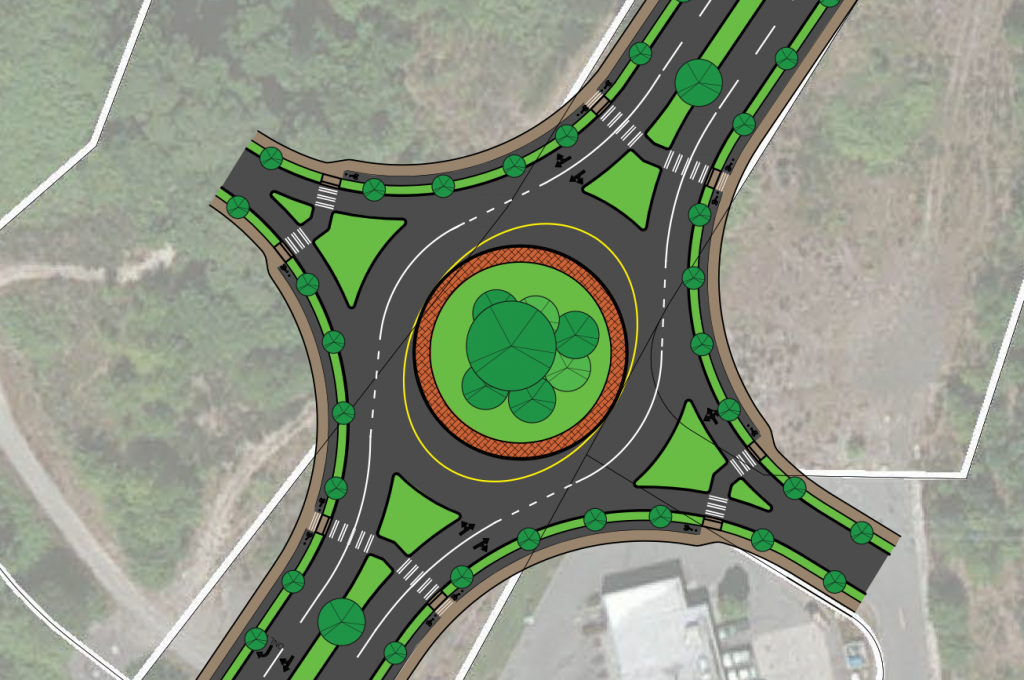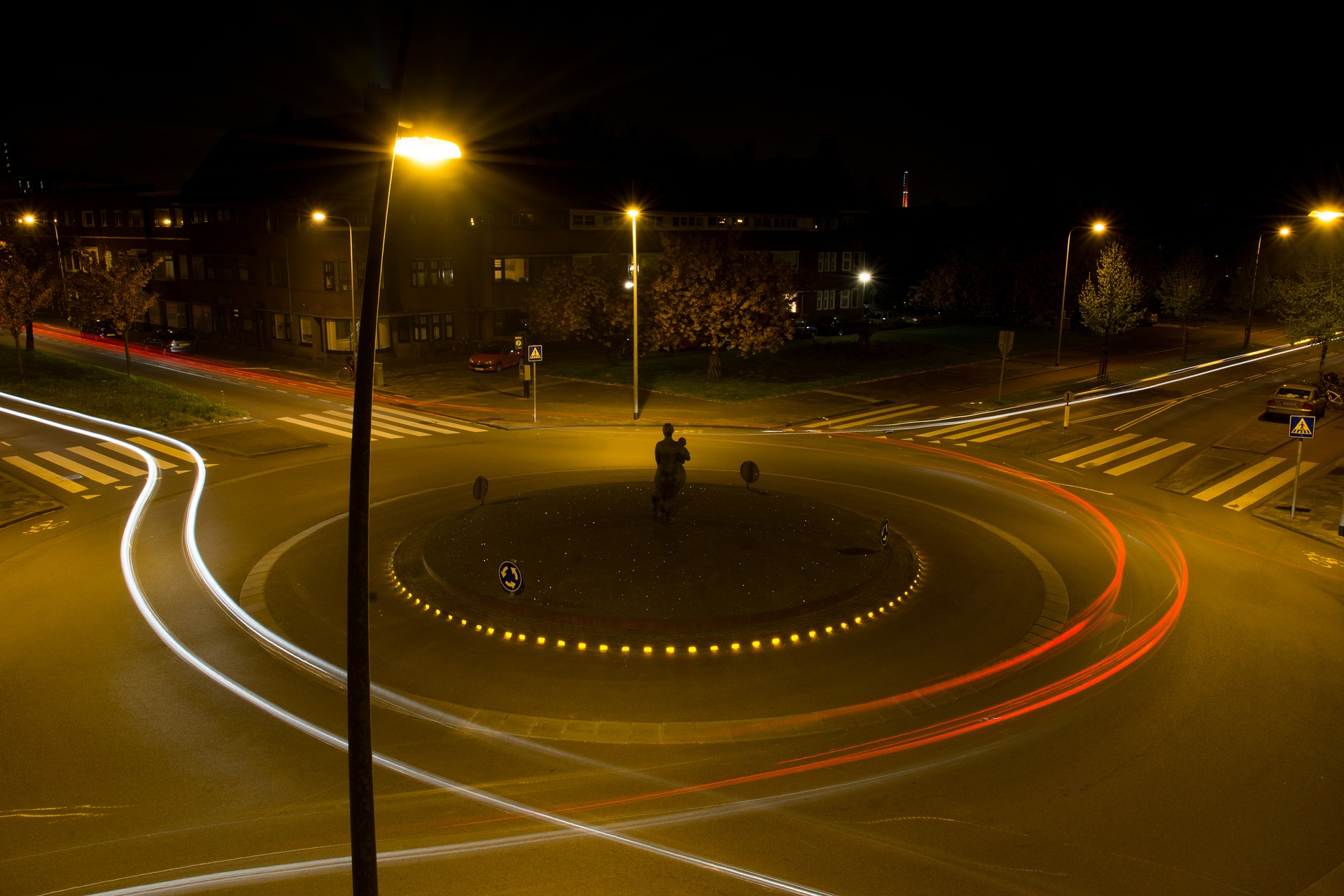Washington State is paving the way for other states on many important issues, including healthcare, worker pay, development and traffic safety. The rest of the country often looks towards Washington as an example of how certain policies and initiatives can inform the decisions we make to improve the way we treat employees, the way we treat our sickest residents and the way we build our infrastructure.
Case in point – the number of roundabouts in Washington State is rising. These traffic models force traffic to slow down and eliminate the need for traffic lights. Newer models in the state have a second ring dedicated to pedestrians and bicyclists. So, what’s fueling this transformation from traditional stops signs and stop lights to roundabouts? The answer is improved safety, reduced collisions, improved traffic flow, cost and space.
Still, the question remains – are American drivers ready to accept roundabouts as a common fixture of our roads? While the United States has been slow to adopt them when compared to other countries, there is overwhelming evidence that we are already adapting to roundabouts, and that most skeptical drivers will change their minds once they become familiar with how to navigate them. Washington State, which has had roundabouts since 1997, is once again leading the way by providing a great example of a state where roundabouts have been particularly successful.
Better Safety
There are a number of facts and figures on the improved safety of roundabouts when compared to traditional traffic control strategies. According to studies done by the Federal Highway Administration and the Insurance Institute for Highway Safety, roundabouts resulted in a 40 percent reduction in pedestrian collisions, 37 percent reduction in overall collisions, 90 percent reduction in fatality crashes and 75 percent reduction in injury collisions.
Designed for Fewer and Milder Collisions
There are many reasons why roundabouts lessen both the likelihood and extent of severe collision injuries. Roundabouts are designed to lower travel speeds, eliminate the desire to beat the light and feature one-way travel. Operators of motor vehicles first have to slow down and yield to traffic before entry to the roundabout. Speeds range from 15 to 20 miles per hour and result in fewer injuries. Unlike traditional intersections, there’s no need to try and beat the light. Roundabouts provide a continuous flow of traffic. With a circular design and one-way travel design, roundabouts also prevent head-on collisions and T-bone collisions.
Improved Traffic Flow
Studies for Washington State completed by the Institute for Highway Safety reported that roundabouts resulted in an 89 percent decrease in traffic delays and 56 percent reduction in motor vehicle stops. Roundabouts move traffic more quickly and with less congestion than intersections with traffic control lights. It’s all about yielding instead of actually stopping.

Less Cost and Less Space
In the long term, roundabouts are less costly than installing traffic signals. There are no electrical, maintenance or hardware costs like there are with traffic signals. These costs can tally from $5,000 to $10,000 every year for Washington State. Roundabouts are also more practical in the event of a power outage. Roundabouts continue to operate without any need for police staff to direct traffic. While roundabouts need more property for the intersection, they do take up less space on streets leading to the roundabout. Typically, they also need fewer lanes.
They’re Becoming More Common
The roundabout rage hasn’t struck just Washington State — it’s showing up in other areas like Wisconsin, Amsterdam and other parts of the world, too. The state of Wisconsin has been installing them since 2004. Currently, there are around 120 roundabouts in Washington, with many more on the horizon. Cities with multiple roundabouts include Bellingham, Federal Way, Olympia, Spokane, University Place, Moses Lake and Gig Harbor. Washington roundabouts in the design process include SR-160, SR-282, I-82 and SR-18.

New Jersey and New York are also jumping on the roundabout bandwagon. The state of New York now has 112, and New Jersey has been gradually replacing traffic circles with roundabouts. Modern roundabouts in Amsterdam include a second ring for cyclists, with enough space for vehicles to pass. Some bicyclists even adjust their speed to pass behind or in front of motor vehicles. For the Dutch, it’s about respect and attitude.
How to Drive, Walk and Bike a Roundabout
In Washington, there are both single-lane and multiple-lane roundabouts. The key things to remember about driving roundabouts is to yield to other drivers, stay in your lane, don’t change lanes, don’t stop, and avoid driving next to large vehicles. Oversized vehicles need more room to complete the turn in a roundabout and may straddle the lanes. Slow down as you approach the roundabout and look for pedestrians in the crosswalk. In a multiple-lane roundabout, you’ll need to choose a lane before entering. And in a multiple-lane roundabout, you must yield to both lanes of traffic.
The crosswalks in roundabouts are also set further back from traffic and allow drivers more time to react to pedestrians. Pedestrians should look for approaching traffic before walking through the crosswalk. There are also triangular islands for pedestrians to stop for a safe place. Bicyclists can opt to ride through the roundabout or walk their bikes in pedestrian crosswalks. Just like drivers, cyclists must obey the rules of the roundabout.
The modern roundabouts in Washington are designed to accommodate all types of vehicles, including trucks and trailers, buses, and emergency vehicles. The main feature is a raised central island. Often, the central island includes a truck apron that acts as an extra lane for big vehicles. Roundabouts also often feature triangular splitter islands as a refuge for pedestrians and to slow traffic.
Public Opinion on Roundabouts
While many folks are squeamish at their first rodeo with a roundabout, after driving one most people are in favor of them. A survey conducted by the Insurance Institute for Highway Safety showed that only 31 percent were in favor of roundabouts before construction. After the roundabout was constructed and used, that percentage increased to 63 percent. These numbers suggest that it’s really a fear of the unknown. Once people realized that roundabouts allowed them to go through the intersection safely and without having to stop, their fears dissipated.
So, what do roundabouts mean for drivers? First off, they mean fewer red lights. They also mean less chance of an accident, less chance of a severe injury and less traffic delays. Many people who used to spend 20 minutes just getting to a major highway can do it in just five minutes. Hopefully, roundabouts are here to stay and won’t be just a passing trend.
As Washington has beautifully illustrated, roundabouts represent a progressive approach to improving road safety, provided only that people are educated about the benefits and the proper use of them.
Bert Louthian is a Columbia, SC injury lawyer, who represents faultless victims of car accidents. Through both his clients’ and his own personal experiences in recovering from serious injuries sustained in a collision, he has a passion for working hands-on to improve road safety and encouraging drivers to be aware of the risks that exist on our roads. When out of the office, Bert enjoys spending time with his family and playing his bass guitar.




